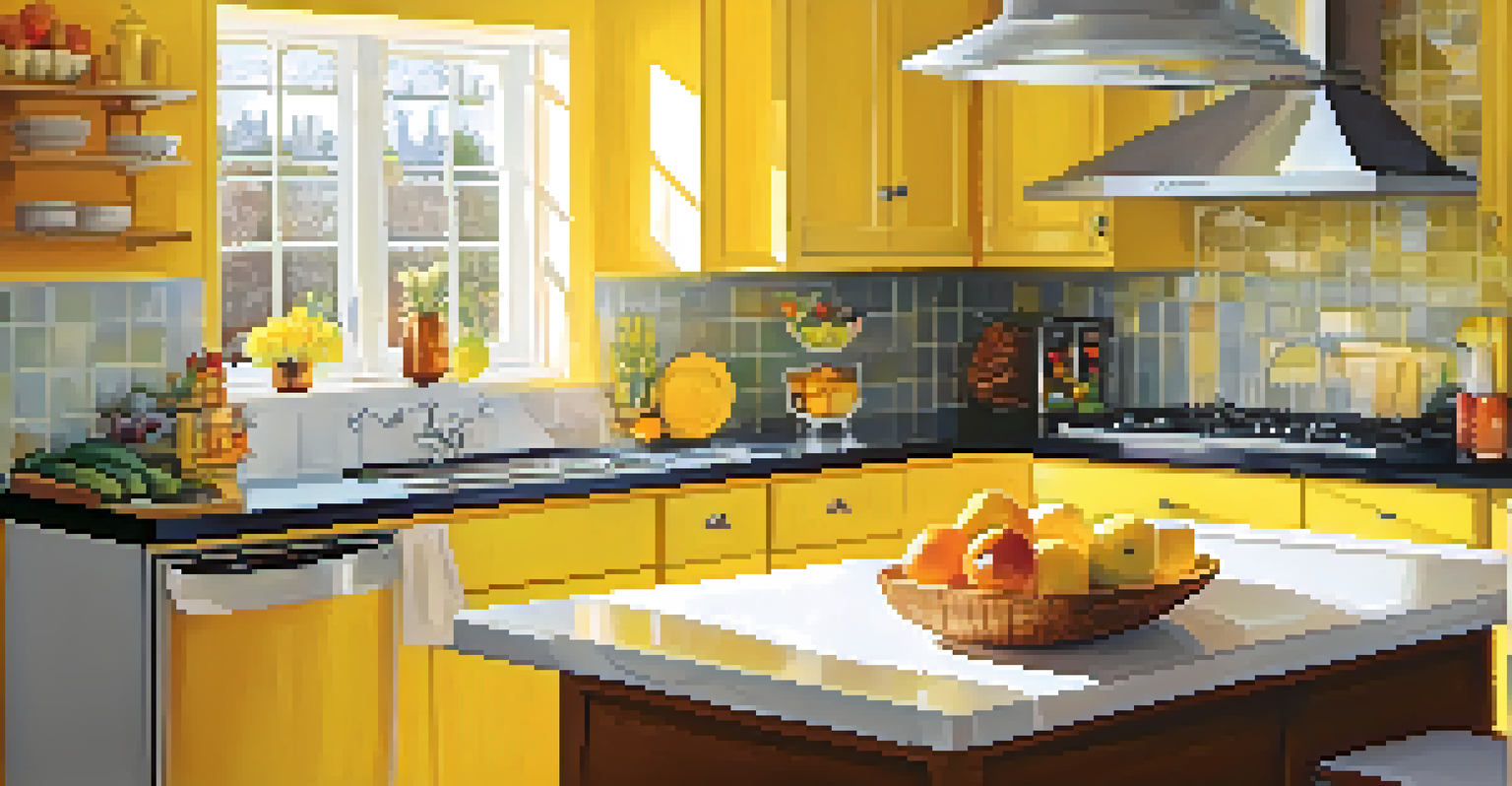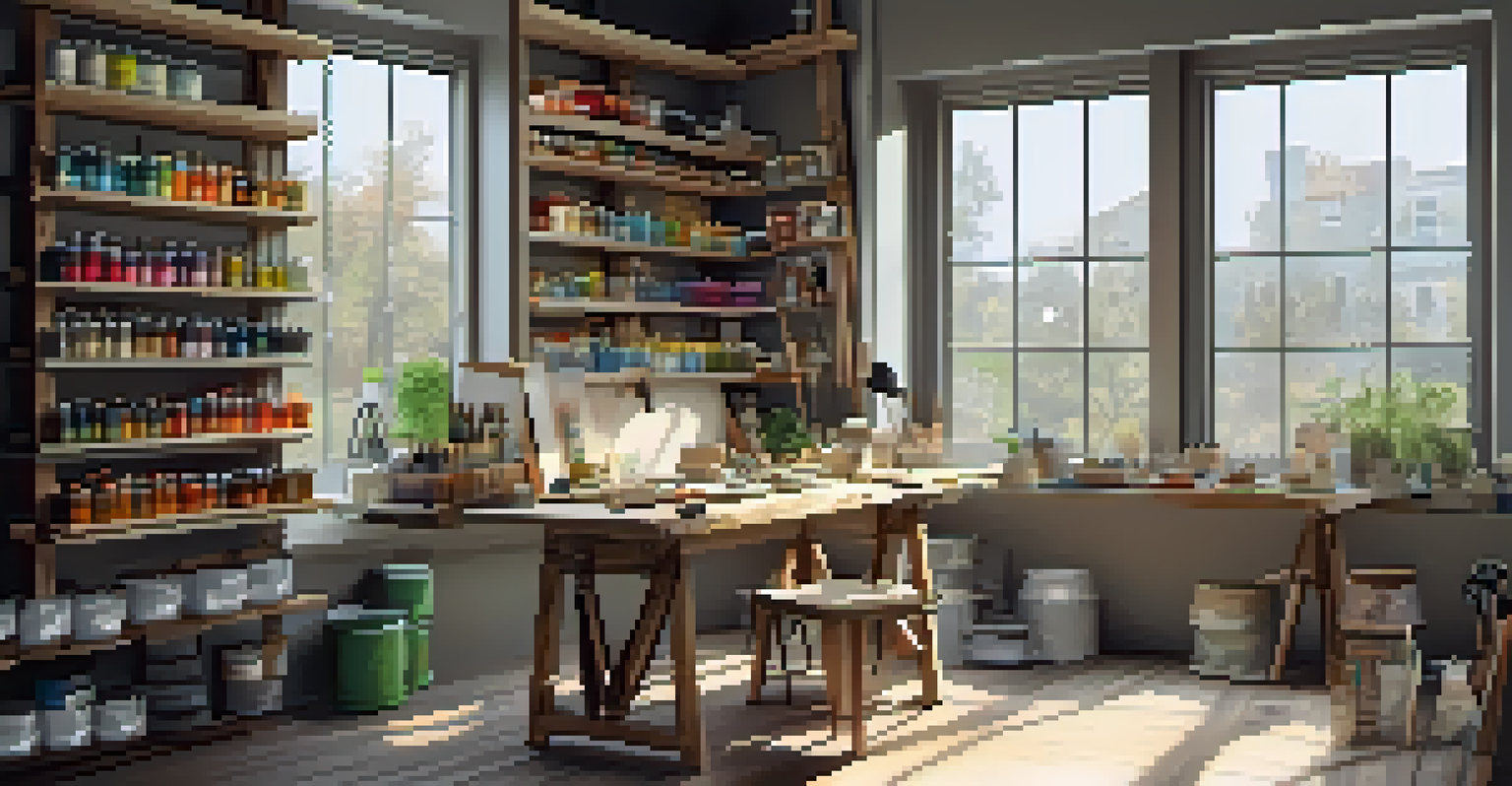Beginner's Guide to Selecting the Right Paint for Your Home

Understanding Paint Types: A Quick Overview for Beginners
When starting your painting project, it's essential to understand the different types of paint available. The two main categories are oil-based and water-based paints. Oil-based paints are durable and ideal for surfaces that require a tough finish, while water-based paints are easier to clean and have lower fumes, making them suitable for interior walls.
Color is the keyboard, the eyes are the harmonies, the soul is the piano with many strings.
Additionally, you’ll encounter finishes like matte, eggshell, satin, and gloss. Each finish has its unique look and function; for instance, gloss finishes are shiny and great for highlighting details, while matte finishes lend a cozy feel to walls. Understanding these basics will help you make informed choices.
Finally, don’t forget about specialty paints, such as chalkboard or magnetic paints, which can add a fun twist to your decor. By familiarizing yourself with these options, you can better assess what suits your needs and style.
Choosing the Right Color: Tips for Picking Paint Shades
Selecting the right color for your home can be both exciting and daunting. Start by considering the mood you want to create in each space. Soft blues and greens can evoke tranquility, while bold reds and yellows can energize a room. Think about how each color aligns with the functions of the room.

A helpful tip is to test colors in your space before committing. Paint a small patch on the wall and observe how it looks at different times of the day. Lighting can change the appearance of a color significantly, so this step is crucial for making a confident choice.
Know Your Paint Types
Understanding the differences between oil-based and water-based paints, along with various finishes, is crucial for making informed choices in your painting projects.
Lastly, consider the overall flow of your home. While it’s tempting to choose different colors for each room, a cohesive palette can create a more harmonious feel. Aim for colors that complement each other to maintain a balanced look throughout your home.
Considering Room Function: Paint Choices for Different Spaces
Each room in your home serves a different purpose, and this affects your paint choice. For high-traffic areas like hallways, opt for durable, washable paints to withstand wear and tear. Living rooms and bedrooms can benefit from softer finishes that create a welcoming atmosphere.
The details are not the details. They make the design.
Kitchens and bathrooms require special consideration due to moisture and humidity. Look for paints labeled as moisture-resistant or specifically designed for these areas, as they help prevent mold and mildew growth. These paints often come in finishes that are easy to clean, ensuring your spaces remain fresh.
Additionally, don't overlook the impact of furniture and decor on your paint choice. Consider how your existing pieces will harmonize with the new color. Using the right paint in relation to the room’s function will enhance both aesthetics and practicality.
Understanding Sheen Levels: How They Affect Your Space
The sheen of your paint refers to its level of glossiness, which can drastically alter the look and feel of your room. Flat or matte finishes absorb light, making them perfect for hiding imperfections on walls, but they can be harder to clean. They work well in low-traffic areas where durability isn’t a concern.
On the other hand, higher sheen levels like satin or semi-gloss reflect more light, adding a subtle shine. These finishes are ideal for spaces that need durability, such as kitchens and bathrooms. They’re easier to wipe down, making them practical for areas prone to stains.
Choose Colors Wisely
Selecting the right color involves considering the mood of the room and testing paint samples in different lighting conditions before making a final decision.
Ultimately, choosing the right sheen is about balancing aesthetics with functionality. Consider where you’re painting and how much wear that surface will experience to select the most suitable finish.
Eco-Friendly Paint Options: Sustainable Choices for Your Home
As awareness of environmental issues grows, eco-friendly paint options have become increasingly popular. Low-VOC (volatile organic compounds) paints release fewer harmful chemicals, making them a healthier choice for indoor air quality. Many brands now offer a variety of colors and finishes while adhering to eco-friendly standards.
Additionally, some paints are made from natural materials like clay or plant extracts, providing a non-toxic alternative that’s safe for your family and pets. These options not only help the planet but can also add unique textures and finishes to your walls.
When choosing eco-friendly paints, always look for certifications or labels that verify their sustainability claims. Making mindful choices in your paint selection can contribute positively to both your home environment and the planet.
Budgeting for Paint: Costs and Considerations for Homeowners
Budgeting for your painting project is key to ensuring you get the best results without breaking the bank. Start by calculating the square footage of the area you plan to paint, as this will determine how much paint you need. Most paint cans cover about 350 square feet, but always check the label for specifics.
Consider not just the cost of paint itself, but also additional supplies like brushes, rollers, painter's tape, and drop cloths. If you're hiring a professional, get multiple quotes and ask for detailed breakdowns to understand labor costs. This will help you budget effectively and avoid surprises.
Plan Your Budget Carefully
Budgeting for your painting project should include not only the cost of paint but also supplies and labor, ensuring you stay on track financially.
Lastly, don't forget to factor in potential extras like primer or special finishes. Investing in quality products can save you money in the long run, as they often require fewer coats and last longer.
Application Techniques: Tips for a Flawless Finish
Once you've selected your paint and gathered your supplies, it's time to apply it. Start by prepping your space: clean the walls, patch up any holes, and use painter's tape to protect edges. Proper preparation is crucial for achieving a smooth, professional-looking finish and will save you time during cleanup.
When it comes to applying the paint, use a high-quality brush or roller to ensure even coverage. For larger areas, rollers can speed up the process, while brushes are perfect for corners and detailed work. Remember to paint in sections and maintain a wet edge to avoid unsightly lines.

Finally, patience is key. Allow each coat to dry fully before applying the next, and don’t rush the process. Taking your time will result in a polished finish that you can be proud of for years to come.